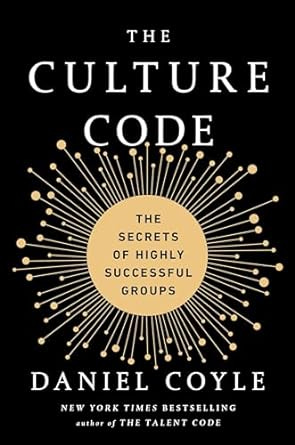Background on Why I Read the Book
This book was a gift I received from Lauren Hawkins and Bre Williams on my birthday in 2020. At the time I was working for the University of Kansas Football Team, and they knew I was a culture nerd. I have had the pleasure of working in or with sports for the last 15 years of my life and one thing I have always admired is a successful culture. I have been a part of good cultures and bad cultures, so I am always learning all I can about cultures. Specifically in the sports and organizational culture areas.
Takeaway One
Those in Successful Cultures are in Close Proximity to Each Other.
In the book the author talked about how he noticed those who were successful created atmospheres where there was close proximity of all in the organization. Employees and leadership would be around each other frequently. In the book he talks about how Zappos wanted to create multiple “bumps” each fay for everyone who worked there because they knew this would allow for the growth of relationships and the transfer of ideas. Not only did they focus on physical proximity, but they knew by creating these atmospheres they could create intangible proximity as well.
Takeaway Two
Successful Cultures Allowed Created an Atmosphere of Vulnerability and Had a Mastery of Quick Communication.
The author highlighted a story about a military unit who has a lower ranking official who suggested to a higher ranking official they should not return at night during a difficult mission. The higher-ranking official ignored the lower ranking official without considering his idea. Because of this oversight they were hijacked and fortunately didn’t lose their lives. The lower ranking official who was ignored became one of the greatest officials in military history because he used his experience of being ignored to champion those under him and allow them the opportunity to voice their suggestions during training. His encouragement and careful placement of vulnerability in his training allowed for those under him to serve in high positions in the military.
Inside of this vulnerability he found that successful groups have a mastery of communicating on the fly. The author detailed this in the book when he examined a study of college graduates vs elementary aged students. In a project of problem solving the students dominated the college graduates because they used quick words and phrases to instruct each other on what to do.
Click HERE to Get YOUR Copy of The Culture Code
Takeaway Three
Successful Cultures have Real Time Signals.
The author highlighted a study by Amy Edmundson which tracked the learning velocity of surgical teams. In one of the showdowns there was a surgical team was at a great teaching hospital in the city that had all the medical resources. The other team a surgical team that was not a teaching hospital and was in a rural area. The study shocked many as the non-teaching hospital in a rural area performed in greater numbers. They found in the study this was largely do to how the leader framed the work and provided real time signals.
The teaching hospital’s message was this is a new procedure.
The non-teaching hospital’s message was this procedure will help our patients greatly.
Because of this personal message the rural hospital was more purposeful in learning the new procedure.
The leaders in the rural use the following real time signals for their surgeons:
Framing
Roles
Rehearsal
Explicit encouragement to speak up.
Active reflection
Reading about this study was incredible.
There it is. Those are the three takeaways I have from reading The Culture Code by Daniel Coyle. This book was a great read and a lot of topics discussed in the book will help me as leader.
Check out my book review video which discusses these three takeaways and so much more:




